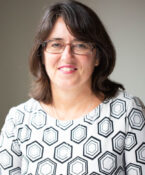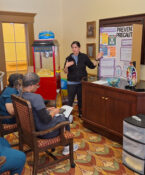Want Better Health Care? Find a New “”Home””
Earlier this month, the U.S. House of Representatives narrowly passed President Obama’s landmark health care legislation. And while the president expressed hopes that he would be able to sign the bill into law before the end of this year, opponents of the plan in the Senate are likely to move the vote into 2010.
That’s really no surprise: A political hot potato like health care reform is bound to engender strong, passionate debate. But one recommendation from the reform package should not be ignored. The so-called “medical home” is a good idea whose time is finally nigh, regardless of the health care debate outcome.
First put forward by the American Academy of Pediatrics in 1967, today’s version of the medical home integrates the concept of the old-time family doctor with a whole-person approach to specialty care, supported by networked teams of specialists in a collaborative environment. Led by a patient’s personal physician, a team of individuals at the practice level collectively takes responsibility for a patient’s ongoing care throughout the various life stages that include acute care, chronic care preventive services and end-of-life (palliative) care.
A medical home integrates all elements of the health care system (e.g., subspecialty care, hospitals, home health agencies, nursing homes) with the patient’s community (e.g., family, as well as public and private services). As a result, patients receive a far more logical flow of care than is available in today’s expensive, fragmented, specialty approach.
More and more organizations are coming together in favor of the medical home concept. The American College of Physicians, the American Academy of Family Physicians, the American Academy of Pediatrics, the American Osteopathic Association and the American Association of Medical Colleges, all support various versions of the concept.
But there are many questions and ongoing studies regarding whether or not a medical home achieves better and cheaper results than more traditional methods of care.
One major concern is the role of primary care physicians as the patient’s first stop and the central hub of the medical home. Primary care physicians are in short supply due to relatively low pay, long hours and mountains of paperwork. Many medical students simply focus on more profitable areas of specialization.
Other concerns revolve around the role of the primary care physician as gatekeeper rather than care provider, and the high cost of implementing EMR (Electronic Medical Records) systems, to ensure throughput of patient data.
Nevertheless, a number of government agencies, public and private organizations, insurance companies, and others are testing various aspects of the medical home.
At least 20 bills in 10 states have been introduced this year to promote the concept of medical homes. Earlier this year, the Obama administration announced pilot medical home projects for the Medicare health insurance program for the elderly. In September, Blue Cross and Blue Shield of Illinois launched a medical home program involving more than 20,000 health plan members. (If successful, the insurer will open it up to more of its 7.2 million health plan members).
The New England Journal of Medicine also published recommendations for the success of medical homes that included increased sharing of information across health care providers, the broadening of performance measures, and the establishment of payment systems that share savings with the physicians involved. A final report on a medical home national demonstration project by the American Academy of Family Physicians, which began in 2006 at 36 sites, will be published in 2010.
If these ambitious medical home pilots improve care and control costs, they could serve as a national model for health system improvement. An oft-cited (and admittedly old) report from the Annals of Family Medicine showed that health care quality would improve and costs would decrease by more than 5 percent, or $67 billion per year, if every American had a medical home. And even though the data may be from 2004, the significance of the findings remains valid.
As businesspeople, we must face facts: the number of uninsured Americans jumped from 45.7 million in 2007 to 46.3 million in 2008, as unemployment and the recession forced people to end insurance payments. Many of these individuals are now forced to forego treatment for chronic diseases, which will simply delay the inevitable and ratchet up health care costs over the long-term. Meanwhile, the number of available physicians is falling, as seen by study after study from state after state. Over the long haul, our nation’s productivity and leadership will pay the price for this unbalanced equation.
As long as we’re contemplating the largest expansion of health care coverage since Medicare was created more than 40 years ago, shouldn’t we make sure it’s an investment in a system that works? The concept of a medical home may not yet be perfect, but surely it can be part of an overall answer to the looming primary physician shortage and offer a higher level of continuous professional care to our fellow citizens that they’re not getting now.
— From the Nov. 23 issue of the Fort Worth Business Press



![Uyen Sa Nguyen Scaled[58]](https://www.unthsc.edu/newsroom/wp-content/uploads/sites/16/Uyen-Sa-Nguyen-scaled58-145x175.jpg)

Social media